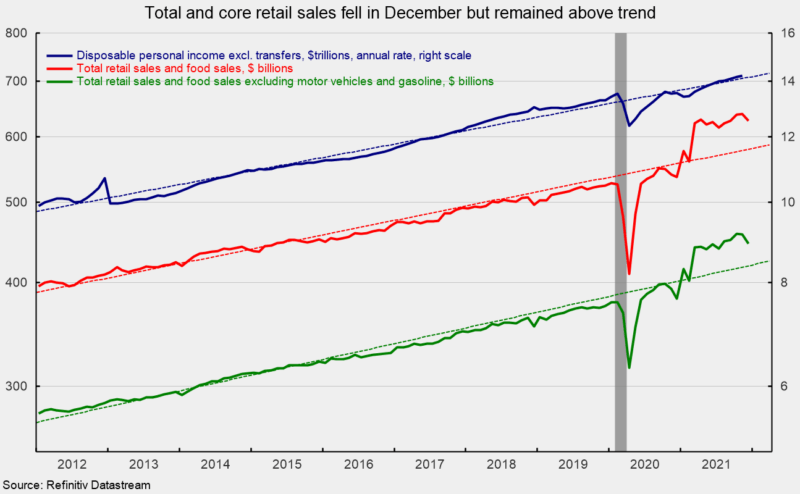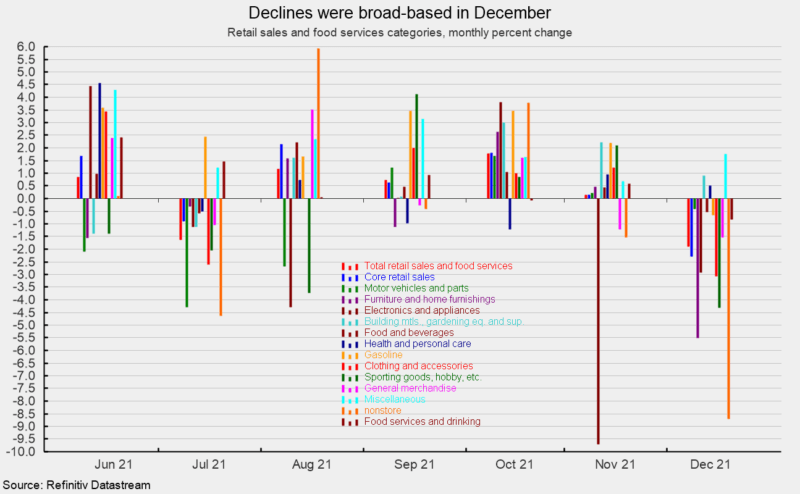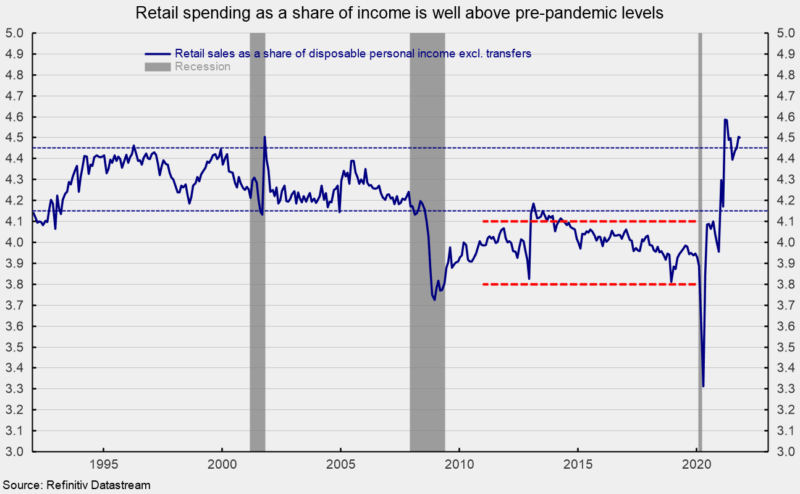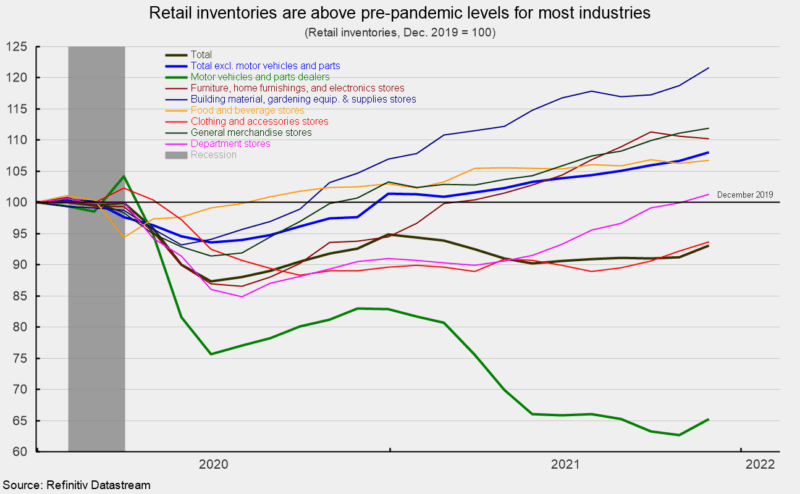Retail Spending Fell Sharply in December
Retail sales and food-services spending sank 1.9 percent in December following a 0.2 percent gain in November and a strong 1.8 percent jump in October. Despite the December drop, total retail sales are still up 16.9 percent from a year ago and remain about 8 percent above the pre-pandemic trend (see first chart).
Core retail sales, which exclude motor vehicle dealers and gasoline retailers, dropped 2.5 percent for the month, following a 0.1 percent fall in November but a 1.6 percent increase in October, leaving that measure with a 16.5 percent gain from a year ago. Core retail sales are 6.5 percent above the pre-pandemic trend (see first chart).
Most categories were down in December. Just three categories posted gains while 10 showed declines. The gains were led by a 1.8 percent increase for miscellaneous retailers, followed by building material and garden equipment and supplies dealers with a 0.9 percent gain, and health and personal care stores with a 0.5 percent rise.
Nonstore retailers led the decliners, down 8.7 percent, followed by furniture and home furnishings store sales, off 5.5 percent, sporting goods, hobby, and bookstore sales, down 4.3 percent, clothing and accessory store sales, down 3.1 percent, and electronics and appliance store sales, off 2.9 percent (see second chart).
With retail sales continuing to run above the recent eight-year trend (see first chart), measured as a share of disposable income excluding transfers, retail sales are also well above the pre-pandemic range of 3.8 percent to 4.1 percent and even above the 4.2 percent to 4.4 percent range that persisted for much of the 1992 though 2007 period (see third chart).
Slower sales may help the demand/supply imbalance that has been putting upward pressure on prices. Furthermore, retail inventories rose 2.0 percent in November with several industries showing gains in recent months (see fourth chart). Motor vehicle inventories also rose in November but continue to be the laggard, coming in at about 65 percent of the December 2019 level. Beyond motor vehicles, only clothing and accessories stores show lower inventories relative to December 2019.
Overall, total and core retail sales posted sharp declines in December but remain above recent trends. As a share of disposable income excluding transfers, sales are above the pre-pandemic range and above the 1992 through 2007 range. Retail sales may grow more in line with the rate of growth in disposable income excluding transfers in coming months. This could help alleviate upward pressure on prices, particularly if production/supply continues to make gains. The economic outlook is for continued growth and continued upward pressure on prices though progress towards easing pressures may be accelerating.









